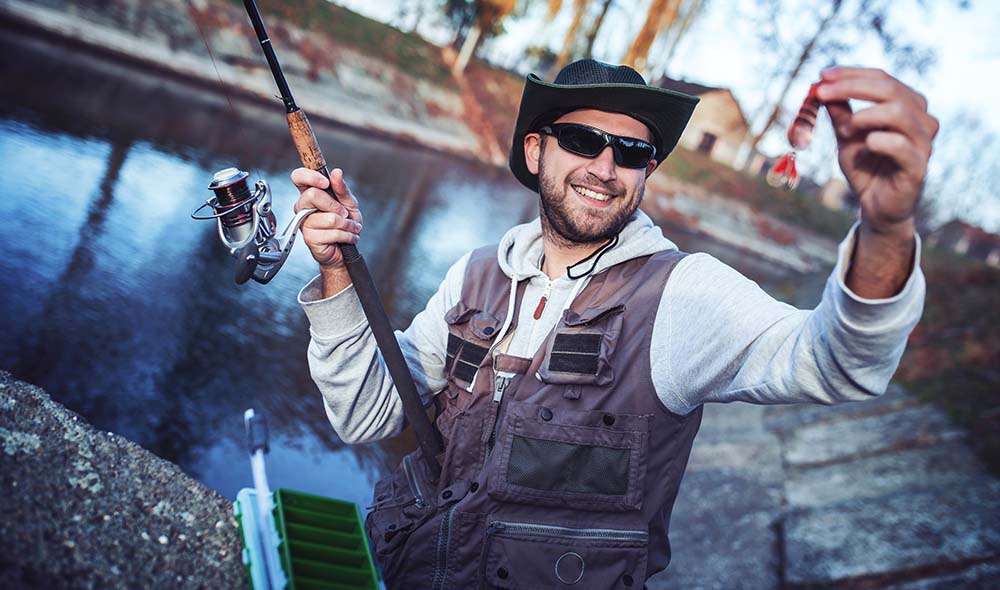Many people start fishing by catching channel catfish. Unfortunately, most grow out of chasing catfish as they turn to other species, but this fish can still provide incredible excitement and excellent table fare.
One of the most widespread and abundant game fish in North America, channel cats populate just about every freshwater system in Alabama. Although they can’t reach the size of their giant cousins, blue and flathead catfish, channels can top 50 pounds. Most run in the one- to five-pound range, but Donald Cox set the Alabama standard with a 40-pounder he pulled from Inland Lake, a 1,557-acre impoundment in Blount County near Oneonta.
“Channel cats can be found almost everywhere and are not shy about biting,” says Brian Barton, a Tennessee River guide from Muscle Shoals. “If they’re in an area, they will bite. Channel cats tend to like shallower water than blue cats and usually seek out shoreline structure, like logs, stumps, weeds and rock piles. Channel catfish usually school in small numbers, so if a person catches a channel cat off a piece of structure, that angler should continue to fish the area.”
With about 10,000 taste buds per square inch of its skin, a catfish swims through the water like a giant tongue tasting everything. Their sensors can perceive odors down to one part in 10 billion parts of water, so catfish can detect minute food particles or scents from long distances. They miss few opportunities to grab a tempting morsel and they eat almost anything. Some excellent baits include shrimp, nightcrawlers, minnows, fish pieces, clams, dough balls, crawfish, cheese, livers, gizzards, commercial stink or blood baits and even such odd items as soap, among other things.
The more it smells, the better they bite
“In general, the more it smells, the better channel cats bite it,” Barton says. “A glob of shad guts is my favorite bait. I also use chicken livers, slightly spoiled shrimp, cut bait and nightcrawlers.”
Countless people catch channel cats with perhaps the simplest forms of fishing. They dangle nightcrawlers, shrimp, crickets or other baits from bobbers. Toss the rig next to good cover and wait for the float to disappear. Other anglers prefer to fish on bottom with a sinker rig and wait for a tug on the line.
Of course, the old methods still work, but anglers can catch channel cats many other ways. For fishing sloping shorelines or other deep structure not directly under a boat, try a slip-float rig. With a slip-float rig, a small weight pulls the line through an eye on the float. A stopper keeps the line from slipping too far, allowing the bait to suspend at the desired depth. With a slip-float rig, an angler can make a natural vertical presentation without sitting on top of the structure or fish, thus keeping the bait in the strike zone longer. Experiment with different depths.
“With a slip-float rig, I primarily fish deeper ledges, humps or rock piles where I want to suspend my baits just off the bottom,” Barton explains. “I typically try to position my bait about one to three feet off the bottom. In river environments, look for channel cats in eddy pools and slack current areas just outside the main flow.”
Channel catfish normally prefer natural baits, but anglers occasionally catch them on spinnerbaits, crankbaits, plastic worms, jigs, flies or other artificials. Barton tips weedless spoons with succulent bait and throws them into places where conventional catfish rigs would probably snag. Tipped with a strip of skipjack, mullet, shad or other temptation, the bait undulates through the water like a live fish swimming. The natural scent and oils coming oozing from the bait add to the enticement. Throw this rig around weed beds, fallen trees or logs and retrieve it slowly just off the bottom. Pause the retrieve occasionally.
For hot freezer-filling action, Alabama anglers don’t even need boats. The state regularly stocks channel catfish into many of its 23 managed public fishing lakes located in 20 counties. Some better catfish lakes include the ones in Bibb, Dallas, Fayette, Geneva, Lamar, Madison, Marion and Walker counties.
For more information on Alabama public fishing lakes, visit www.outdooralabama.com
John N. Felsher lives in Semmes, Ala. Contact him through Facebook.





